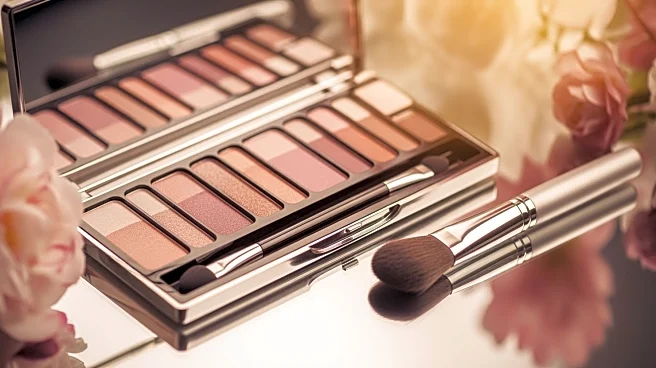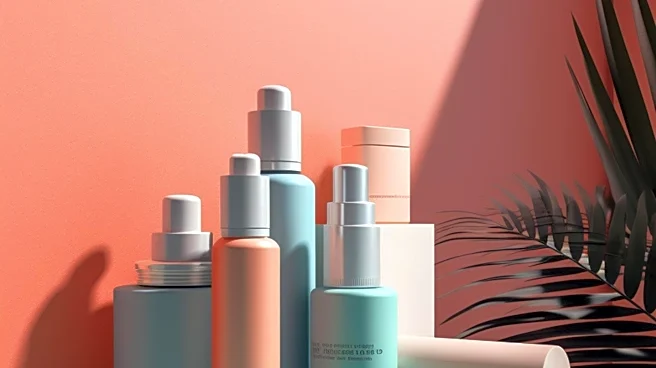What's Happening?
The trend of high-end skincare among tweens and teens is gaining momentum, driven by social media and influencer culture. Kids as young as three are being targeted by skincare brands, with actress Shay
Mitchell launching a line of sheet masks for toddlers. This trend is reflected in increased spending on cosmetics and skincare by teen shoppers, as reported by investment bank Piper Sandler. Dermatologists are expressing concern over the potential negative effects of elaborate skincare routines on young skin, which may include irritation and inflammation due to the use of active ingredients like retinol and alpha hydroxy acids.
Why It's Important?
The rise in skincare interest among tweens and teens highlights a shift in consumer behavior influenced by social media. While this trend empowers young individuals to take care of their skin, it also raises concerns about the necessity and safety of using complex skincare products at a young age. Dermatologists warn that excessive use of skincare products can lead to skin issues such as teenage rosacea and seborrheic dermatitis. The trend also reflects broader societal changes, where skincare becomes a status symbol rather than a necessity, potentially impacting consumer spending patterns and the beauty industry.
What's Next?
As the trend continues, skincare brands and dermatologists may need to focus on educating young consumers about appropriate skincare practices. This includes promoting the use of basic skincare routines suitable for young skin, such as cleansers and moisturizers with sunscreen. There is also an opportunity to leverage this interest to encourage sun protection among young individuals. Parents and dermatologists may play a crucial role in guiding tweens and teens towards healthier skincare habits, potentially influencing future product development and marketing strategies within the beauty industry.
Beyond the Headlines
The tween skincare trend may have deeper implications for societal norms and consumer culture. It reflects the growing influence of social media on young consumers and the pressure to conform to beauty standards at an early age. This trend could lead to long-term shifts in how skincare is marketed and perceived, with potential ethical considerations regarding the targeting of young children by beauty brands. Additionally, the trend may foster a stronger bond between parents and children, as they navigate skincare choices together, highlighting the cultural significance of beauty rituals in family dynamics.











